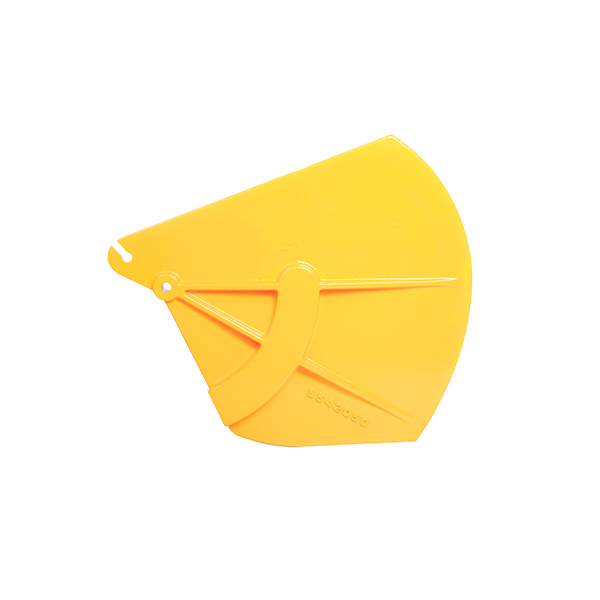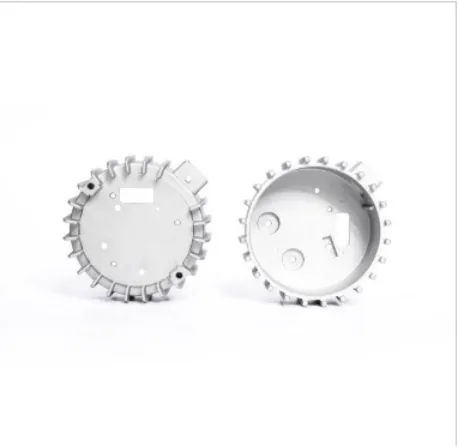Mobile:+86-311-808-126-83
Email:info@ydcastings.com
English
Premium Steel Foundries Durable & Custom Casting Solutions
Below is a structured overview of the discussion:
- Industry landscape and technological evolution
- Quantifiable quality benchmarks
- Manufacturing capability comparison
- Engineering customization process
- Precision applications in demanding sectors
- Sustainable innovation initiatives
- Strategic partnership considerations

(steel foundries)
The Evolution and Importance of Modern Steel Foundries
Contemporary industrial operations rely fundamentally on steel foundries
that have undergone significant technological transformation. Where traditional facilities once consumed 35-40 kWh per ton of output, modern facilities operate at 18-22 kWh through induction furnace upgrades. This industrial metamorphosis enables production of components with dimensional tolerances within ±0.15mm, satisfying aerospace and medical device specifications impossible a decade prior. Global shipments exceeded 105 million metric tons last year, with the automotive sector consuming approximately 40% of premium-grade steel casting output. Continuous improvement programs now drive defect rates below 0.8% across tier-one suppliers.
Technical Superiority and Data-Driven Performance
Industry-leading manufacturers employ proprietary vacuum degassing systems achieving nitrogen content below 80 ppm, directly enhancing tensile strength (950-1200 MPa range). Pressure integrity testing conducted at 1.8x operational requirements prevents field failures in extreme environments. Consider these critical metrics:
| Parameter | Industry Standard | Top Performers |
|---|---|---|
| Surface Finish (Ra) | 3.2 μm | 1.6 μm |
| Heat Treatment Consistency | ±15°C | ±5°C |
| Production Lead Time | 14-18 weeks | 8-10 weeks |
| NDT Reliability | 92% detection | 99.4% detection |
Investment casting specialists utilize robotic shelling systems maintaining coating thickness variation below 0.25mm, directly influencing metallurgical integrity. Advanced thermal imaging during solidification captures cooling rate deviations exceeding ±10% in real-time.
Manufacturing Capability Comparison
Distinctions emerge between steel investment foundries versus conventional operations:
| Capability | Standard Foundries | Specialized Investment Foundries |
|---|---|---|
| Wall Thickness Minimum | 4.5 mm | 1.2 mm |
| Weight Accuracy | ±7% | ±1.5% |
| Alloy Options | Carbon/Low Alloy | + Superalloys/Tool Steel |
| Surface Porosity | Acceptable per ASTM A802 | Near elimination |
Precision-focused facilities leverage 7-axis machining integration and coordinate measuring machines (CMM) for dimensional verification within 5 microns. For high-temperature applications, nickel-based superalloy production has increased 34% year-over-year among these specialists.
Engineering-Driven Custom Solutions
Complex component requirements trigger systematic development protocols. Material science experts first conduct finite element analysis simulating operational stresses before recommending alloy compositions. A recent turbomachinery project involved iterative prototyping with these customized specifications:
- Special Requirements: Sustained operation at 870°C with thermal cycling
- Solution: Mar-M 247 superalloy with controlled grain structure
- Precision Metrics: Airfoil profile within 0.1mm tolerance
- Results: 4000+ operational hours without degradation
Manufacturing execution systems track over 200 parameters during production, including melt chemistry deviations as minor as 0.03% carbon content. Client involvement at critical process inspection points (CPIP) ensures continuous alignment with application demands.
Mission-Critical Component Applications
Steel precision casting parts enable functionality in extreme environments across industries:
- Energy Sector: Drill head components withstand 150+ MPa downhole pressures while maintaining dimensional stability at 300°C. Rotor groups in steam turbines demonstrated 64,000 hours maintenance-free operation
- Aerospace: Investment-cast turbine blades with internal cooling channels reduced fuel consumption by 7% in next-gen engines. Hydraulic valve bodies maintain 5000 psi performance through 25,000 flight cycles
- Medical: Surgical tooling with mirror-finish surfaces (Ra 0.4μm) withstands 500+ autoclave sterilization cycles without corrosion initiation
One offshore platform project utilized duplex stainless steel valves eliminating corrosion-related replacements, saving $1.2 million annually in maintenance expenditures.
Innovation and Environmental Leadership
Progressive facilities implement binder jetting for sand mold production, reducing waste material by 73% compared to conventional methods. Water reclamation initiatives now achieve 90% recycling rates industry-wide. Research into nanoparticle-modified alloys promises 15-20% strength improvements without weight penalties for transportation applications. Industry certifications including ISO 14001 and energy management audits demonstrate a commitment to eco-efficient manufacturing.
Selecting Strategic Steel Foundry Partners
Identifying optimal steel foundries necessitates evaluating technological capabilities against mission requirements. Premium partners provide comprehensive material traceability through blockchain-enabled documentation. Proven capacity for complex geometries (thin walls, internal features, tight-tolerance interfaces) remains critical for advanced applications. Industry leaders now deliver comprehensive digital twins with production components, enabling virtual performance validation. Partners with integrated machining reduce total logistics costs 18-22% while improving component concentricity below 5μm TIR. Ultimately, suppliers embracing Industry 4.0 practices deliver measurable quality improvements—one tier-one automotive manufacturer documented 46% reduction in warranty claims through strategic foundry collaboration.

(steel foundries)
FAQS on steel foundries
Q: What services do steel foundries typically offer?
A: Steel foundries specialize in melting and casting molten steel into components. They produce industrial parts using sand casting, investment casting, and precision techniques. Most handle finishing processes like machining and heat treatment onsite.
Q: How do steel investment foundries achieve complex geometries?
A: Investment foundries use ceramic molds formed around wax patterns melted during pouring. This enables production of intricate, near-net-shape steel components. The process minimizes machining needs for turbine blades and aerospace parts.
Q: What industries require steel precision casting parts?
A: Precision steel castings serve critical roles in aerospace, defense, and medical equipment. They're essential for high-stress applications like valve systems and surgical tools. Automotive and energy sectors also depend on their dimensional accuracy.
Q: What quality standards govern steel foundry production?
A: Reputable foundries adhere to ISO 9001 and ASTM specifications like A703. Many implement material traceability through heat numbers. For defense projects, NADCAP certifications are often required.
Q: Why choose steel investment casting over machining?
A: Investment casting reduces material waste for complex designs by 70-90% compared to machining. It consolidates multi-part assemblies into single castings. This improves structural integrity while lowering production costs at scale.
-
Reliable Pipe End Plugs: Essential Industrial ComponentsNewsNov.19,2025
-
Impeller for Pumps - High-Efficiency, Durable, OEM-ReadyNewsNov.19,2025
-
Essential Guide to Pipe End Covers for Industrial UseNewsNov.19,2025
-
Motor Housing: Precision-Cast, Durable, Heat-DissipatingNewsNov.12,2025
-
Impeller for Pumps: High-Efficiency, Durable, OEM FitNewsNov.12,2025
-
Impeller for Water Pumps | Precision-Balanced, DurableNewsNov.12,2025











